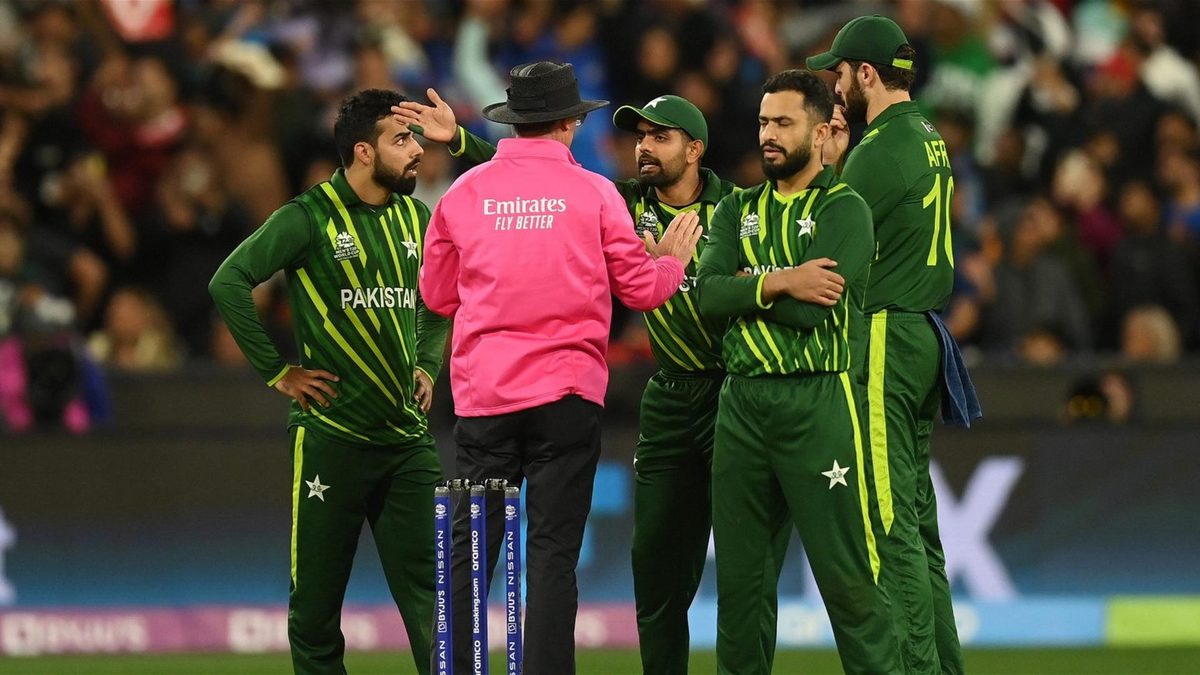
It wouldn’t be an India-Pakistan match without some controversy, and their T20 World Cup classic at the MCG fully delivered.
The game was thrilling right from the opening stages, and gave plenty of ammunition to those whose favourite pastime is not watching the game, but feeling aggrieved that their team has been wronged.
There were three main flashpoints in the India-Pakistan clash. Let us take the two in the final over, that went against Pakistan, first.
Why was the full toss no ball not reviewed?
Sixteen needed off six became 13 needed off three, which became six needed off three after Virat Kohli pulled a high full toss, bowled by Mohammad Nawaz, for six, with the delivery called a no ball.
When the decision was not reviewed, some criticised the umpires for not doing so. However, the ICC’s playing conditions are clear that no balls (apart from front-foot no balls, called off the field) can only be reviewed after a dismissal. It’s reasonable to question the ICC for not allowing umpire reviews for such no balls, but with the playing conditions as they are, no mistake was made.
As for the decision itself, it’s a marginal one. The key point isn’t the height of the ball when Kohli made contact, but what the height would have been had it passed him in his stance. It’s reasonable to debate whether the right decision was made, but given the lack of technology and how close the call was, it can’t be counted as an error.
Why was the ball not dead when Virat Kohli was bowled?
The resulting free hit (rebowled due to a wide) was the second significant moment of controversy. Kohli was bowled, but with the ball racing to third man, he and Dinesh Karthik ran three.
Mohammad Rizwan protested the decision with the umpire, with many suggesting the ball should have been called dead once Kohli was bowled. To figure out the rights and wrongs of this incident, we must consult both the playing conditions and the MCC’s Laws of Cricket, since the ‘Free hit’ rule is only a playing condition, while the laws decree when a ball is dead.
The free hit rule states, “the striker can be dismissed only under the circumstances that apply for a no ball,” and does not mention the dead ball law. The dead ball law does not say that the ball is dead when the wicket is put down, only when the batter is dismissed. Since Kohli was not dismissed, the ball was not dead. No error.
Why was Axar given run out?
The third incident is a simpler one, in terms of the laws. Axar Patel was run out after Rizwan spilled the ball onto the stumps, with the only debate whether Rizwan’s gloves or the ball had disturbed the timber. TV umpire Richard Kettleborough ruled it was the latter, and hence gave Axar out.
Again, it’s possible to dispute this – and many did – but many also felt the right call was made. If nothing else, the moment shows that the big calls didn’t all go in the same direction. The umpires had a good game, as did both of the teams.








